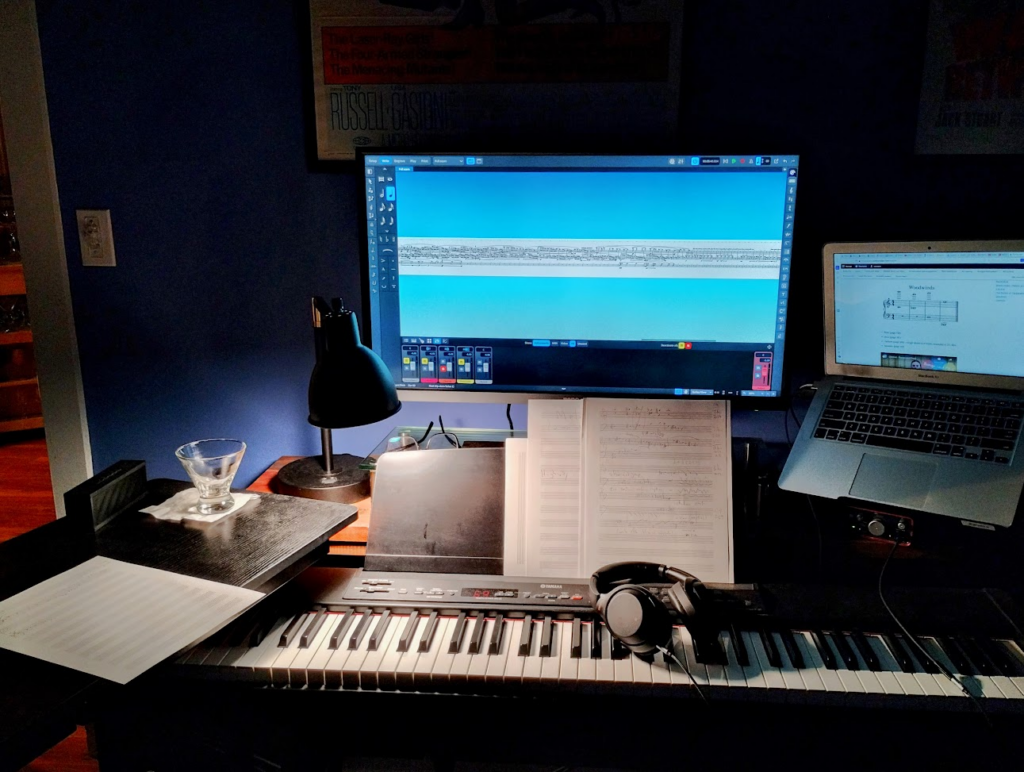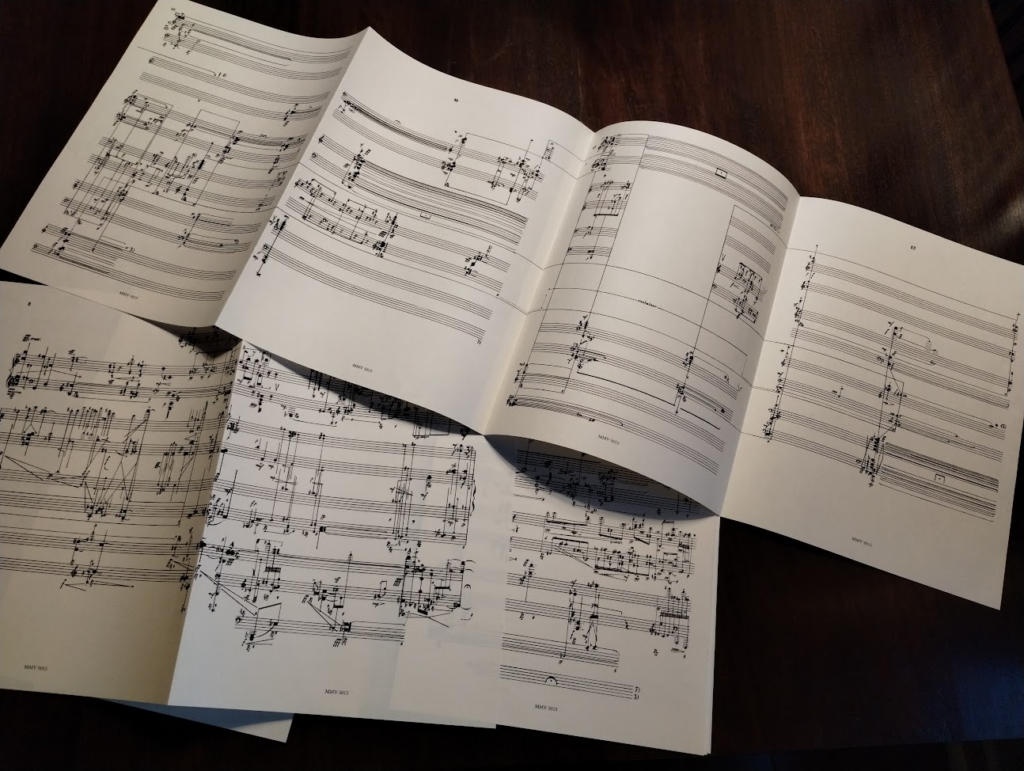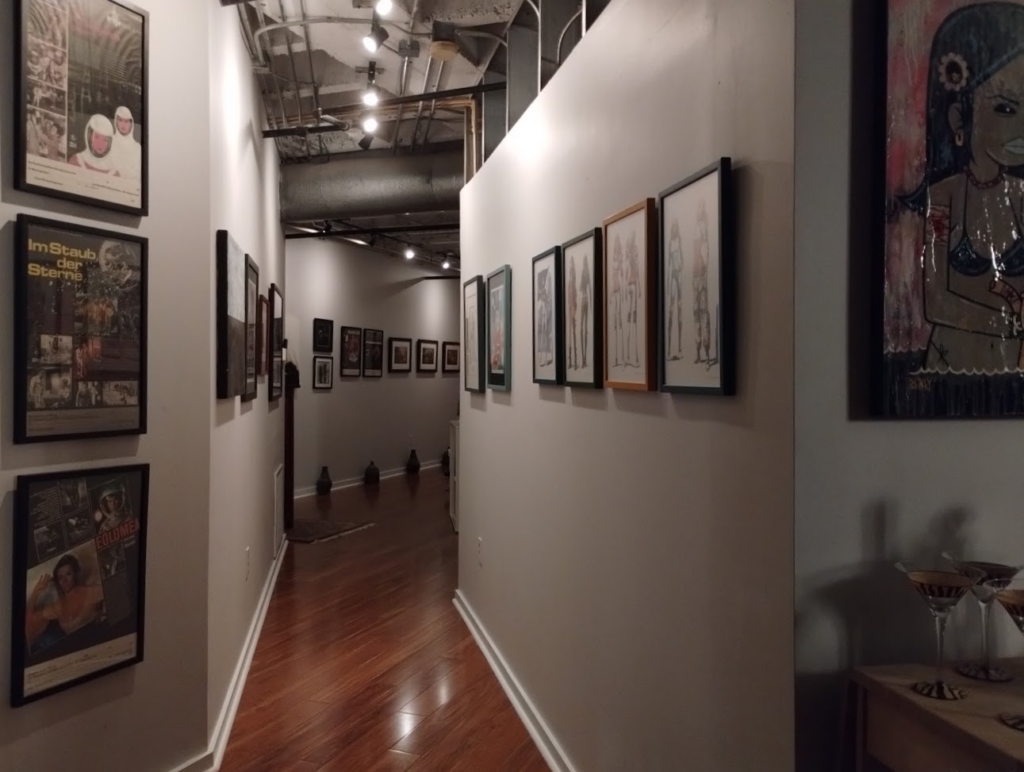Work on the piece has been slow but satisfying. Well, unsatisfyingly slow but what little has been produced lets me see a way forward. I’ve become much more tonal but am using the structural and procedural techniques that I used in Figures to organize that tonality. And I have better headphones good god the sound was awful for several years.

This weekend I plan on re-listening to The History of Photography in Sound. I’m not sure how that popped into my head but a couple of days ago it did. I yearn for the influence of Ian Pace and his interpretation and approach to Finnissy’s work. (Unrelated: There was a now-un-findable-video where Finnessy performed in front a small group of composers their own works and it was notable for the range of modern, 21st-century styles that he appreciated and promoted. It was that mix of tonality and weird bending of tonality that I admire. Still, the un-findable part is unfortunate.)
OMG and I just now found out that it was exactly (tomorrow, Sep the 14th) four years ago that I did A week of “The History of Photography in Sound”. Maybe I internalized the date? Since then I had listened to individual movements from it–the final movement, “Etched bright with sunlight”, around 30 minutes, has been a touchstone–but not it in its entirety. That week, my goal was to actively listen and so listening in smaller segments was a need-thing. I cannot conceive the mind that has the focus to perform those 5-1/2 hours in a single sitting, since obviously I cannot focus on music of that complexity for even more than 30 minutes in a single sitting.
I have abandoned and need to restart several books on music history and theory that I’d been focused on in parallel while writing the last two compositions. With each book, I would read a chapter or a sub-chapter or a few pages and then listen to the works that had been discussed. I’d never listened to Boulez’s Pli selon Pli or Structures or the work of Goeyvaerts or Barraque or Bussotti. Each work can be very long and so the slowness was an enjoyable necessity. And–apart from my obsession with collecting Iron Curtain Eastern European sci-fi movie posters and most recently Barbarella memorabilia–I had purchased a few beautiful scores from those composers. They, the scores, are either a testament to the great achievement or the great failure of 20th-century composition.

So we’ll see how much of History I get through this weekend. I broke up the movements generally in hour-long chunks the last time (really? four years ago?!) because, again, sustained active listening is exhausting.
- Le démon de l’analogie [28′]
- Le réveil de l’intraitable réalité [21′]
- North American Spirituals [24′]
- My parents’ generation thought War meant something [36′]
- Alkan – Paganini [14′]
- Seventeen Immortal Homosexual Poets [34′]
- Eadweard Muybridge – Edvard Munch [26′]
- Kapitalistisch Realisme (mit Sizilianische Männerakte en Bachsche Nachdichtungen) [68′]
- Wachtend op de volgende uitbarsting van repressie en censuur [17′]
- Unsere Afrikareise [31′]
- Etched bright with sunlight [29′]
[ed. so I found the videos where Finnissy performed works in a salon of composers: Cabaret from 2013 and 2014:
Ian Pace wrote an essay/exegesis on History titled A Study of Sources, Techniques and Interpretations (PDF (omg with an Oxford-less comma?)) which I would love to commit to reading but, again, a few pages of theory and I’m off on a two-hour tangent and the composition takes me a week, so the analysis would likely take me several months. If lucky.
Generally, not lucky.
